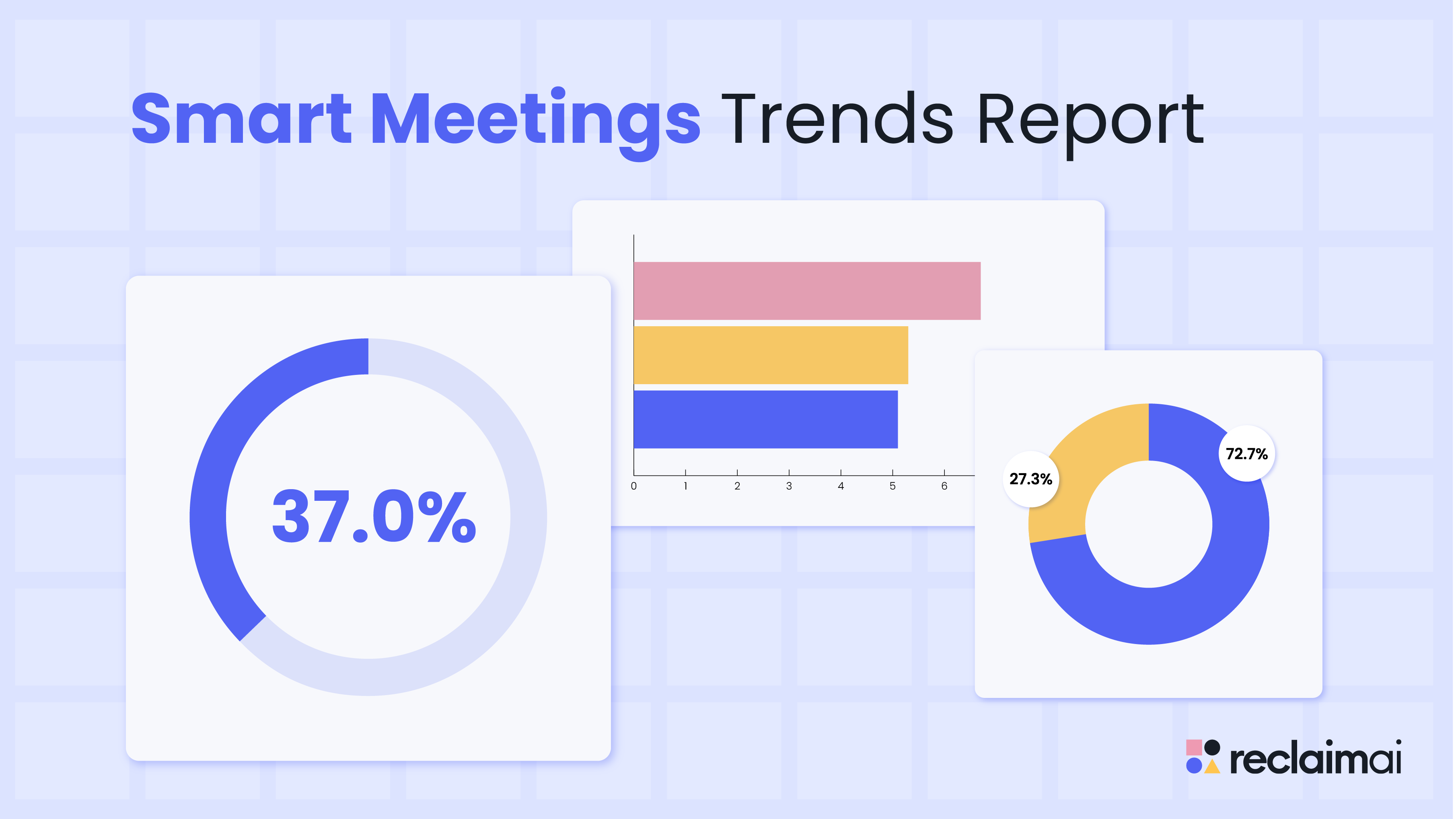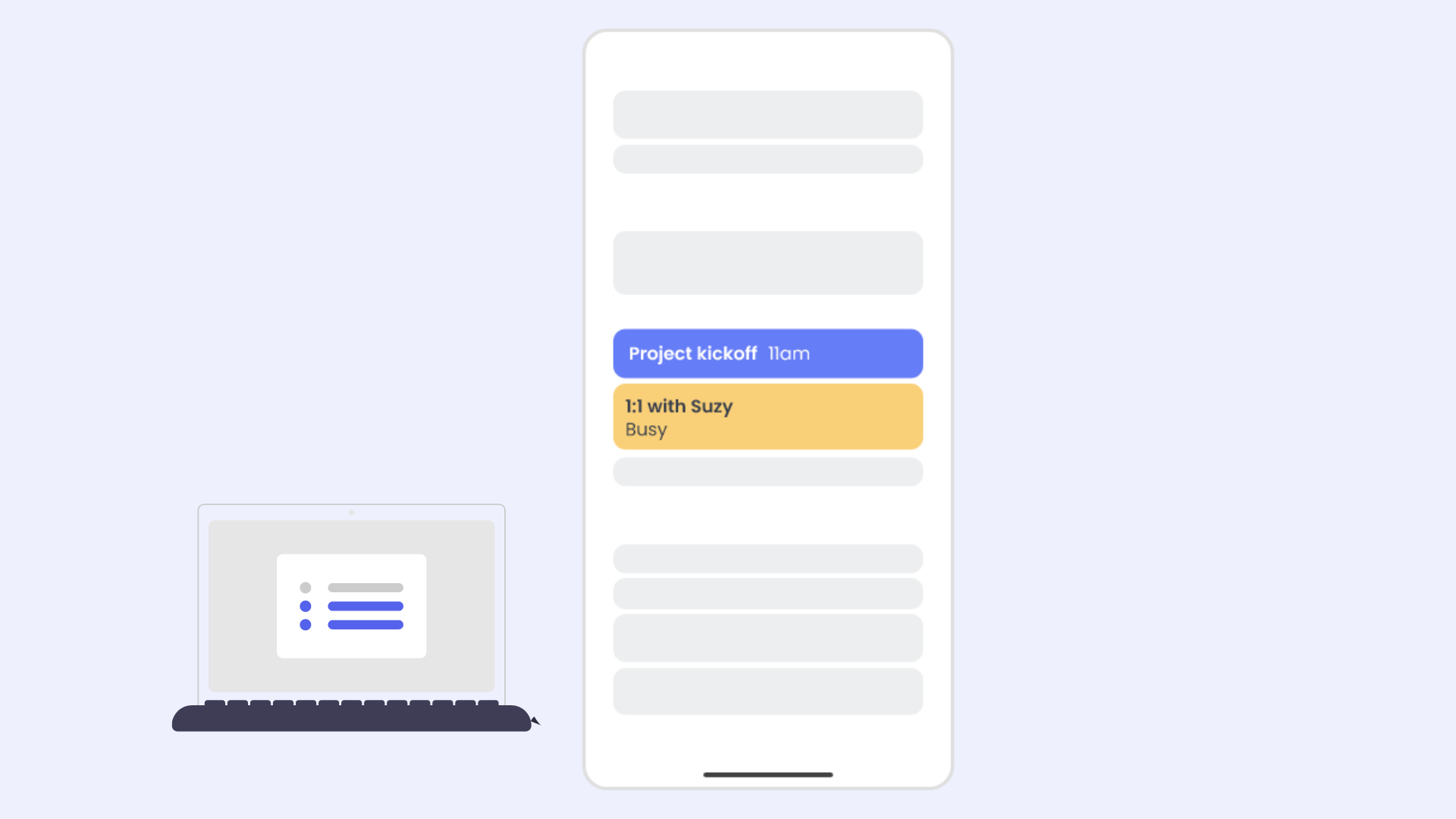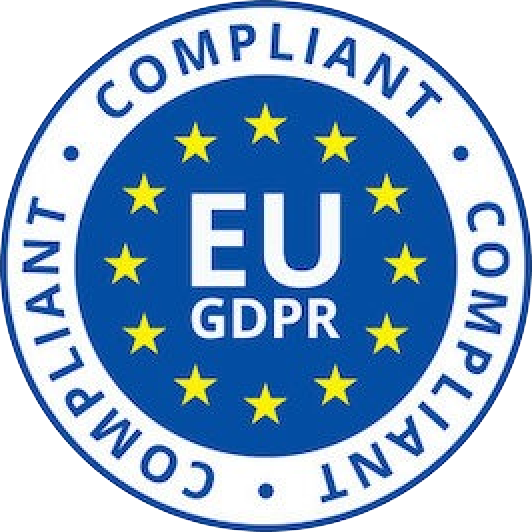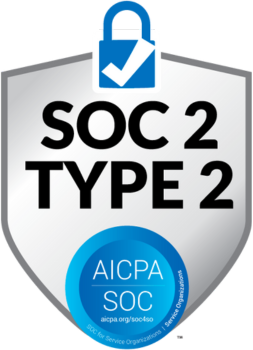

Performance reviews, love them or hate them, are a necessary practice for successful teams and organizations. And while performance reviews have long been fighting a negative reputation around fairness and usefulness – this is largely because team members aren’t being reviewed on their complete performance. Managers are often so limited on time they aren’t able to provide comprehensive reviews or are too focused on their compensation limits to give employees the recognition they deserve.
But the workforce landscape has changed – and performance reviews need to change with it. Employees want work-life balance, time to get through their work, and not to be run down by meetings. So when we consider that only 22.1% of employee burnout comes from inadequate pay vs. 63.4% burnout from lack of time for focused work – it’s clear employees want a more productive work environment than more money to perform at their best.
So whether you’re writing your first round of performance reviews or researching how to revamp a more effective review process for your company – we’ve got you covered. In this post, you’ll learn everything you need to know about performance reviews:
- What are performance reviews?
- Performance reviews are changing
- How to conduct performance reviews
- Performance review template
- 35 example phrases for performance reviews
- Post-performance review
What are performance reviews?
Performance reviews: those two words can elicit a mix of emotions from managers and employees alike. Some dread them, some embrace them, but one thing is certain — some kind of performance review or evaluation is necessary to run a team.
So what are performance reviews? Performance reviews are regular evaluations by management to assess an employee’s job performance. Think of them as a time to hit the pause button, reflect, and evaluate how your team members are doing in their roles.
Think of performance reviews as a compass that guides employees toward their full potential while also steering the organization toward its goals. After all, 37% of employees say receiving more personal recognition would encourage them to produce better work and motivate them to go above and beyond.
At their core, an employee performance review serves two purposes:
- They help assess an individual employee's performance and provide feedback to support their growth, development, and job satisfaction.
- They allow managers to align their team's performance with the organization's goals to keep everyone moving in the same direction.
Even so, performance reviews are not just a one-way street – they need open dialogue between you and your team members. Employees should be able to share their thoughts, aspirations, and concerns, as an effective performance review process should be focused around how an individual can grow.
Performance reviews are changing
Dating back to WWII, performance reviews first started when the US Army began ranking its high-potential soldiers. But it wasn’t until the 1980s when Jack Welch, the CEO of GE, standardized and popularized performance reviews for corporate use.
But many companies today (including GE) have since abandoned this traditional model – as 55% of workers say the annual performance review does not improve their performance. Even 77% of HR leaders do not believe annual performance reviews are accurate measurements of an employee's work.
So many organizations are embracing new approaches to performance reviews that prioritize frequent discussions to improve employee performance and satisfaction:
- Instead of a single annual review, managers hold regular touchpoints with employees.
- Relying less on unfair “single score” rating systems.
- Providing ongoing feedback, focusing on improvement.
- Restructuring discussions to support open dialogue.
- Embracing a variety of performance management apps for more immediate feedback.
Nevertheless, this doesn't mean you should quit performance reviews altogether. Your employees still want to know how they're doing in their roles.
For example, PwC discontinued formal reviews (and its numbered performance rating system) for all 200,000 employees, and many people pushed back. So they needed to build a new review process that gave employees the feedback they needed without the unfair parameters – and they found a much better system. PwC now combines the benefits of ongoing conversations with periodic assessments using scores across 5 competencies, instead of solely relying on single numerical performance ratings.
The changing landscape of performance reviews really reflects how much the traditional approach fell short for both employees and organizations. By embracing new models that foster ongoing communication, shorter-term priorities, and a focus on continuous improvement – you can improve both the motivation and performance of your employees.
How to conduct performance reviews
So, how should you conduct employee performance reviews today? While the traditional annual performance review may be out, that doesn't mean performance management has. Here’s how you can accurately and consistently evaluate your team's performance:
1. Set your review standards
Before diving into the performance review process, you'll first need to lay the groundwork. What standards will you use to evaluate the performance of your employees? Your team should know what their day-to-day expectations are when it comes to their performance. This may sound rather obvious, but it's essential for conducting objective and fair reviews. After all, 85% of employees say they would quit after experiencing an unfair performance review.
Here are popular review standards include to broadly review employee performance:
- Teamwork: Does the employee actively help the team, and request or offer assistance where necessary?
- Problem-solving: Does the employee display strong problem-solving skills and explore creative solutions?
- Productivity: Does the employee stay true to deadlines and consistently finish their projects on time?
- Communication: Does the employee clearly communicate with managers, team members, and customers?
- Quality of work: Does the employee consistently produce the quality of work that’s expected for their role?
- Attendance & dependability: Does the employee show up when expected, and a reliable member of the team?
- Initiative: Does the employee take responsibility, have the ability to work independently, and display initiative?
- Coworker relations: Does the employee interact well with coworkers and enhance the team dynamic?
2. Keep things positive & constructive
Performance reviews aren't meant to be punishing. As a manager, you don't want your employees to feel bad, upset, or hurt by the review – this is not how you boost productivity. The ideal outcome is to motivate your employee – and you do this by recognizing their efforts while constructively addressing areas of improvement.
Keep your performance reviews honest and educational by making it a two-way conversation. No one wants to walk into a one-sided lecture focused on all the things they’re doing wrong. So, encourage your team members to share their perspectives on past performance, challenges, and ideas for improvement – actively listening to their input and concerns. To get the conversation going, you could ask open-ended questions like:
- "What are your thoughts on your performance over the past review period?"
- What were some challenges you faced during this time, and how did you handle them?"
- "What aspects of your role do you find most fulfilling, and why?"
- "In what areas do you feel you've made the most progress, and why?"
- "What support or resources do you need from me to excel in your role?"
And when offering feedback during a performance review, make sure it’s actionable and focused on improvement. Avoid spending too much time on past mistakes or focusing solely on areas of weakness. Instead, highlight achievements, acknowledge progress, and provide guidance on how to further enhance their performance further. It’s best to come prepared with concrete examples to illustrate your points and offer suggestions for development and growth.
3. Be specific, not vague
Ever received the “It’s not right, we need to make it better” feedback before? It’s super vague and about the most unhelpful feedback you can receive. The more precise and detailed your performance feedback is, the more your employee will be able to understand and take meaningful action to improve from it.
Always provide specific and descriptive feedback rather than relying on vague generalizations. When expressed in overly broad terms, feedback tends to be less well-received. Some employees may perceive it as a personal attack rather than constructive criticism, making them even less motivated to improve.
Telling a developer during a performance review, "Your code during this project was sloppy," is only going to hurt their feelings and make them defensive. Instead, use more productive language to offer constructive feedback, such as, "I noticed your code included several bugs, which gave me the impression you were in a rush to deliver it. What I find helpful is to set aside more time for code review so we can catch these earlier. Let’s plan to work that into the next sprint."
4. Use quantifiable goals & data
Wherever possible, take advantage of quantifiable data and goals in your performance reviews. This, of course, requires quantifiable data around the employees' role and performance, which some positions are much easier to gather and track than others. But it’s incredibly valuable if you have it – employees can see their clear goals and track their ongoing performance to stay organized and motivated toward those goals.
Instead of simply telling a salesperson during their performance review, "Your sales call engagement has been way down this past quarter," you can provide a more impactful statement: "During this past quarter, it looks like only 20% of your new sales calls booked resulted in a follow-up call, which may have impacted the 25% drop in your close rate. We actually have a helpful library of scripts with great closing statements to get the follow-up booked. Let’s take a look at how we can leverage these in calls this quarter."
Quantifying the impact adds context to the feedback, and allows you to illustrate a much better recap of their performance. When they can understand the direct correlation between their actions and outcomes, employees are better equipped to take proactive steps on where to improve.
However, you need reliable and objective data to keep these performance reviews fair and honest. As we mentioned, the perceived fairness of a performance review will determine both how it's received and whether employees will adapt going forward. If an employee feels they’re being treated unfairly, they’re more likely going to be investing more time into finding a new job vs. improving their current one.
Performance review template
While creating fair, accurate, and constructive reviews is challenging – it doesn’t have to be once you get your template down. Here’s a sample performance review template you can use to optimize your process:

Performance review phrases - 35 examples
Once you have the template down, you may be wondering: what do I say to the employee during their performance reviews? It's a fair question; the whole thing can feel a bit awkward, and delivering feedback in a diplomatic and constructive manner isn't always straightforward.
So, here are some of the top performance review phrases for your next performance review:
Recognize strong performance
- "You consistently go above and beyond, smashing your targets and showing unmatched dedication."
- "Your out-of-the-box thinking and creative problem-solving have revolutionized our processes and brought impressive results."
- "You're a master at juggling multiple projects, ensuring they all get done on time and with outstanding results."
- "Your meticulous attention to detail and precise work has consistently delivered high-quality outputs."
- "Your leadership skills shine, inspiring and motivating the team to achieve great things together.
Address a performance gap
- "Let's talk about an area where we can improve. I've noticed a gap between your targets and current results, and I believe we can work together to bridge that gap."
- "I want to address some challenges we've been facing. Let’s take a look at a couple of ways you can enhance your performance to meet the expected standards."
- "I've noticed some opportunities for growth. Let's work on closing the gap between your current performance and expectations."
- "We need to address some areas where improvement is needed. Let's collaborate on strategies to boost your performance and reach the desired level."
- "I want to discuss an opportunity for development. I've identified some areas where you can enhance your skills and overcome the performance gap."
Provide constructive feedback
- "I wanted to share some feedback for growth. I've noticed some areas where you have an opportunity to enhance your performance and reach even greater heights."
- "Let's have an open conversation about areas where we can fine-tune your skills. I believe with some adjustments, you can become even more effective in your role."
- "I appreciate all of your hard work, and I'd like to provide some constructive feedback. Let’s take a look at some specific areas where we can work together to elevate your performance."
- "I wanted to discuss some opportunities for improvement. By addressing these areas head-on, we can unlock your full potential and achieve exceptional results."
- "I have some suggestions to help you grow and develop. Let's talk about how we can enhance your skills and maximize your impact."
Demonstrated initiative
- "I wanted to acknowledge your impressive initiative. Your proactive approach to taking on additional responsibilities and seeking opportunities to contribute has made a significant impact on our team's success."
- "Your go-getter attitude is truly admirable. You consistently show initiative by going above and beyond in your work and taking ownership of projects. Your dedication and drive inspire others around you."
- "I've noticed your exceptional initiative in identifying areas for improvement and implementing innovative solutions. Your proactive mindset has contributed to streamlining processes and driving efficiency."
- "Your initiative in seeking out new challenges and proposing creative ideas has been remarkable. Your willingness to step outside your comfort zone and take calculated risks has paid off in achieving remarkable outcomes."
- "Your proactive mindset really sets you apart. You consistently demonstrate initiative by anticipating needs, suggesting improvements, and taking action. Your resourcefulness and independent thinking are invaluable."
Collaboration & teamwork
- "I wanted to acknowledge your outstanding collaboration skills. Your ability to work effectively with colleagues from different teams and departments has such a positive impact on our work culture."
- "Your teamwork is exceptional. You consistently foster collaboration by actively listening, valuing diverse perspectives, and building strong relationships. Your dedication to working together towards shared goals is highly appreciated."
- "Your collaborative approach has made a significant impact on our team's success. Your ability to bring people together, encourage open communication, and facilitate productive discussions has strengthened our team dynamics."
- "I've noticed your outstanding teamwork skills in action. Your willingness to offer support, share knowledge, and collaborate on projects has had a positive ripple effect, creating a culture of collaboration within the team."
- "Your ability to collaborate across departments and align efforts towards shared objectives is remarkable. Your inclusive approach and willingness to go the extra mile has had such a successful impact on our joint initiatives."
Leadership potential
- "I wanted to acknowledge your natural leadership qualities. Your ability to inspire and motivate others, coupled with your strong decision-making skills, sets you apart as a potential leader within our organization."
- "Your leadership potential is evident. You consistently demonstrate the ability to guide and support others, foster a positive team dynamic, and make sound decisions. We would love to help you grow into a leadership role at the company.."
- "I've noticed your exceptional leadership potential. Your ability to take charge, set a clear vision, and rally the team towards common goals showcases your natural leadership abilities."
- "Your leadership qualities shine through in your actions. You consistently lead by example, display strong interpersonal skills, and inspire others to achieve their best. Your potential to lead others is remarkable."
- "Your leadership potential is evident in your ability to effectively communicate, delegate tasks, and motivate team members. Your vision and dedication make you a natural candidate for future leadership roles."
Problem-solving abilities
- "I wanted to acknowledge your exceptional problem-solving abilities. Your analytical skills, creativity, and ability to think outside the box consistently led to new solutions and positive outcomes."
- "Your problem-solving skills are impressive. You consistently approach challenges with a strategic mindset to identify root causes and develop innovative solutions. Your ability to navigate complex problems is commendable."
- "I've noticed your remarkable problem-solving abilities. Your logical thinking, attention to detail, and ability to analyze situations from multiple perspectives consistently result in effective solutions."
- "Your ability to tackle difficult problems head-on is commendable. You consistently demonstrate resourcefulness, resilience, and critical thinking in finding viable solutions. Your problem-solving skills are invaluable."
- "I wanted to recognize your outstanding problem-solving skills. Your ability to identify obstacles, develop creative alternatives, and implement effective solutions is truly impressive. You approach challenges with confidence and determination."
Follow-up after the performance review
While the hard part of compiling and completing the performance review is over – now it’s time to follow up on all the goals and next steps you’ve discussed with your employee.
Here’s how you can maximize the impact of your performance reviews via continuous feedback and improvements:
1. Follow up on next steps
Every performance review should come with some actionable next steps for the employee (and the manager). Of course, as their manager, you shouldn't leave your team in the lurch – you need to follow up and monitor the action items from the discussion. How is your employee doing? Are they hitting the goals you've set out during the review? Are they struggling to do so and require more support from you? These are the questions you should regularly ask yourself following a performance review with your team.
2. Monitor progress on goals
How are things going after your review? Keep those action items in mind for all of your upcoming one-on-one meetings with the employee so you can regularly check in and monitor progress toward their goals. Weekly (or bi-weekly) touch-base meetings will help you provide guidance, and helpful feedback, offer support, and consistently assess their growth. These ongoing conversations will allow your employee to get the ongoing feedback they need to make adjustments, ask questions about challenges, and give you the opportunity to recognize achievements as they continue to grow.
3. Encourage self-reflection
In your next meeting, ask your employee to reflect on their own performance and progress. By promoting self-reflection, you empower them to take ownership of their personal and professional development and continuously strive for improvement. Encourage them to regularly assess their strengths, identify areas for growth, and seek opportunities to apply feedback received during the performance review. And by providing them with access to data around their performance, they’ll have a better understanding of their productivity and will be more motivated to hit the goals set out for them.
4. Foster a culture of feedback
Beyond the formal performance review process, you'll want to do your part to foster a culture of continuous feedback and open communication – and that means a two-way street. Encourage managers and employees to regularly discuss performance, development, and goal alignment, emphasizing the importance of constructive feedback, recognition of achievements, and support for ongoing growth. Be open to feedback yourself – asking regularly, “what can I do to better support you in your role?”
5. Explore performance management tools
Finally, consider using performance management tools or software platforms to streamline and enhance the feedback and review process. Many of the companies we mentioned earlier have adopted such tools. GE, for instance, uses an app called PD@GE to conduct its employee evaluations in lieu of annual performance reviews. These tools can facilitate ongoing feedback, goal tracking, and performance monitoring through a centralized platform to ensure fair and effective performance evaluations across your team. You can also explore productivity and time-tracking apps like Reclaim.ai to ensure employees aren’t wasting too much time in meetings, have adequate time for task work in their schedules, and analyze time-consuming activities week-to-week.
Nurture employee growth with performance reviews 🌱
Performance reviews are far more than just a box to check — they’re a powerful tool for driving employee growth and organizational success. Effective performance reviews create a culture of open communication, where feedback flows freely, and improvement becomes the norm. From recognizing strong performance to addressing gaps and offering constructive feedback, managers play a crucial role in guiding the continuous growth of their employees.
Did we miss anything? How do you conduct performance reviews with your team? Tweet us @reclaimai to let us know!
Trend Reports
Ready for an AI calendar?
Auto-schedule your tasks, habits, breaks, & meetings on Google Calendar.
Start scheduling →It's free! 🎉












.svg)
.svg)
.svg)
.svg)
.svg)


